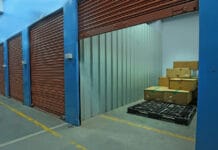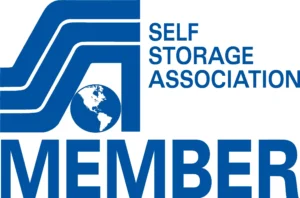The self-storage industry has experienced remarkable growth in recent years, driven by a variety of factors that highlight the increasing need for additional storage solutions. As more individuals and businesses encounter challenges related to space management, self-storage units have become an essential utility. From decluttering homes to managing inventory during renovations, the self storage demand for versatile and accessible options continues to rise.
At the heart of this growing demand are six key drivers, commonly referred to as the 6D’s: Downsizing, Decluttering, Dislocation, Density, Divorce, and Deployment. Each of these factors plays a significant role in shaping the need for self-storage, providing insight into why people and businesses seek out these services.
Understanding these drivers is crucial for both consumers and providers in the self-storage industry. For consumers, recognizing these factors can help in making informed decisions about when and why to utilize self-storage. For providers, it offers valuable insights into customer needs and behaviors, enabling them to tailor their services accordingly.
Whether it’s storing boxes of personal belongings during a home renovation or needing extra space for utility storage during a temporary move, the 6D’s encapsulate the diverse and evolving reasons behind the booming self-storage market. This understanding fosters better solutions and enhances the overall efficiency and convenience of self-storage services.
The 6D’s – Drivers of Self Storage Demand
Understanding these drivers is crucial for recognizing the trends and necessities that propel the self-storage market forward. Self-storage facilities offer a versatile solution to a wide range of storage needs, providing individuals and businesses with the flexibility to store items securely and access them conveniently.
Whether it’s due to a life change, a need for more space, or a temporary transition, self-storage units play a vital role in managing personal and professional belongings.
1. Downsizing
Downsizing refers to the process of moving to a smaller living or working space. This trend is prevalent in both residential and commercial sectors. In the residential context, downsizing often involves individuals or families moving from larger homes to smaller ones, typically due to lifestyle changes such as retirement or financial considerations.
Reasons for Downsizing
Several factors drive the decision to downsize:
- Retirement: As people retire, they often seek smaller, more manageable living spaces. This transition from a larger family home to a smaller residence can result in excess belongings that need storage.
- Financial Considerations: Economic downturns or personal financial constraints can prompt individuals and businesses to opt for smaller, more affordable spaces, leading to the need for additional storage.
- Lifestyle Changes: Shifts in lifestyle, such as children moving out or the desire for a minimalist living environment, can also lead to downsizing.
Impact on Self-Storage Demand
Downsizing frequently results in a surplus of possessions that do not fit into the new, smaller space. This provides an ideal solution for storing these items securely, offering a convenient and accessible option for those who are transitioning to a smaller living or working environment. As downsizing becomes more common, the demand for self-storage units continues to rise, accommodating the needs of individuals and businesses alike.
2. Decluttering
Decluttering involves the process of organizing and removing unnecessary items from living or working spaces. It is a crucial step in maintaining an organized and functional environment, contributing to improved mental well-being and productivity.
Trends in Minimalism and Organization
The minimalist movement has gained significant traction in recent years, emphasizing the importance of living with less and prioritizing quality over quantity. This trend encourages individuals to declutter their spaces, keeping only essential and meaningful items. As people adopt minimalism and seek to create more organized environments, the need for temporary or long-term storage solutions increases.
How Decluttering Leads to Increased Self-Storage Use
Decluttering often results in the need to store items that are not used daily but still hold value or utility. Self-storage units provide the perfect solution for these items, offering a secure and accessible place to keep belongings while maintaining a clutter-free living or working space. The rise in decluttering activities directly contributes to the growing demand for self-storage facilities, as individuals seek to optimize their environments without permanently parting with their possessions.
3. Dislocation
Dislocation refers to temporary or permanent moves due to various reasons such as job transfers, personal circumstances, or housing transitions. This can involve moving to a new city for work, relocating temporarily due to renovations, or finding temporary housing during significant life changes.
Common Scenarios (Job Transfers, Temporary Housing Needs)
Several scenarios exemplify dislocation:
- Job Transfers: Professionals may need to relocate for new job opportunities or company transfers, requiring temporary storage solutions for their belongings.
- Temporary Housing Needs: Situations like home renovations, natural disasters, or short-term travel often necessitate temporary housing arrangements and the need to store household items safely.
Role of Self-Storage in Managing Dislocation
Self-storage facilities are invaluable during periods of dislocation, offering flexible and secure storage options for belongings during transitions. Whether it’s storing furniture, household items, or business equipment, self-storage units provide a reliable solution to manage the complexities of moving and relocation. This adaptability makes self-storage an essential service for individuals and businesses experiencing dislocation, driving consistent demand in the industry.
4. Density and Space Limitations
One major reason people turn to self-storage is urban density. As cities grow and populations increase, space becomes harder to find. In crowded urban areas, there’s often not enough room in homes or offices to store everything. This lack of space makes self-storage a great solution. Self-storage facilities provide a safe and convenient place to keep items that don’t fit at home or work. This is especially helpful for storing seasonal items, extra inventory, or personal belongings.
Challenges of Living or Working in Crowded Areas
Living or working in busy, crowded areas comes with unique challenges that boost the demand for self-storage. Limited living space means residents have to make tough choices about what to keep and what to get rid of. But some things, especially those with sentimental or practical value, can’t just be thrown away.
Businesses in these areas also struggle with space, finding it hard to store inventory, equipment, and documents. Self-storage offers a practical solution, giving both residents and businesses a secure and accessible place to store items they can’t keep on-site.
Self-Storage as a Solution to Space Problems
With the help of various unit sizes and flexible rental options, self-storage facilities meet diverse needs. Residents can store things like furniture, holiday decorations, and personal collections without cluttering their homes. For businesses, self-storage helps manage extra inventory, office supplies, and important documents, keeping workspaces functional and organized. Modern spaces also have security measures like surveillance cameras and controlled access, ensuring stored items are safe and giving users peace of mind.
5. Divorce
Divorce is another significant driver of self-storage demand. The emotional and logistical challenges of separation often require extra storage. Divorce rates have been rising, and splitting up households creates a big need for temporary storage. During a divorce, one or both parties might need to move out of the shared home. This also requires a secure place to keep personal belongings until they find a more permanent living situation. Self-storage units offer a practical and accessible option during these transitions, providing a safe space for possessions while navigating the complexities of separation.
Divorce Rates and Household Impact
Divorce rates vary by region, but the impact on households is significant everywhere. Splitting assets, moving, and dealing with the emotional stress of divorce often lead to a need for storage solutions. Often, people move to smaller places, increasing the need for extra storage. Self-storage facilities offer a convenient and cost-effective solution. This allows individuals to store their belongings securely until they can make more permanent arrangements.
Self-Storage During Transitions
Self-storage is crucial during the transitions caused by divorce. Whether it’s storing furniture, personal items, or important documents, self-storage units provide a safe and secure environment. This flexibility is especially helpful during the uncertainty of separation, allowing individuals to focus on rebuilding their lives without worrying about excess possessions. With different unit sizes and rental terms, self-storage can meet various needs, making it an essential resource during personal upheaval.
6. Deployment and Its Role
Deployment, whether for military, long-term travel, or temporary assignments, is another key driver of self-storage demand. People facing deployment often need to secure their personal and business belongings for extended periods. Self-storage facilities offer the perfect solution, providing a safe and accessible place to store items while away.
The challenges of deployment, including the need for secure and reliable storage, make self-storage an essential service for those in transition. Whether storing household goods, vehicles, or business equipment, self-storage gives peace of mind and ensures belongings are protected during absences.
Final Words
Understanding the 6D’s provides valuable insights into the growing demand for self-storage solutions. Each driver uniquely contributes to the increasing need for secure, convenient, and flexible storage options. Downsizing and decluttering help individuals and businesses optimize their spaces, while dislocation and density highlight the necessity for temporary and long-term storage in urban areas. Divorce and deployment further underscore the importance of having accessible storage during life transitions.
Looking ahead, the self-storage industry is poised for continued growth, driven by these six key factors. As urbanization increases and lifestyles evolve, the demand for storage space will only rise. Understanding these drivers is crucial for businesses in the self-storage sector to tailor their services to meet customer needs effectively. By recognizing and responding to these trends, the self-storage industry can continue to provide essential services that support individuals and businesses during pivotal moments.
FAQs
A: The 6D’s stand for Demographics, Downsizing, Dislocation, Divorce, Decluttering, and Density. These factors drive the demand for self-storage solutions.
A: Divorce often results in households splitting up, necessitating additional storage for belongings that no longer fit in new, smaller living spaces.
A: Dislocation, such as moving for a job or relocating due to natural disasters, creates a temporary need for storing personal items securely.
A: Downsizing often leads to a lack of space for personal belongings, making self-storage units a practical solution for storing excess items.
A: Demographics, such as aging populations and growing urbanization, increase the need for additional storage as people accumulate more belongings over time.
A: After the passing of a loved one, families often need a place to store personal items and memorabilia until they can decide what to keep or distribute.
A: Higher population density in urban areas leads to smaller living spaces, increasing the need for external storage solutions to accommodate belongings.
A: During renovations, self storage provides a secure place to keep furniture and belongings safe from dust and damage, ensuring a clutter-free work area.
A: Self storage can be both long-term and short-term, depending on individual needs, such as temporary relocations or ongoing storage requirements.
A: Common items include furniture, seasonal decorations, clothing, business inventory, and important documents, among others.







